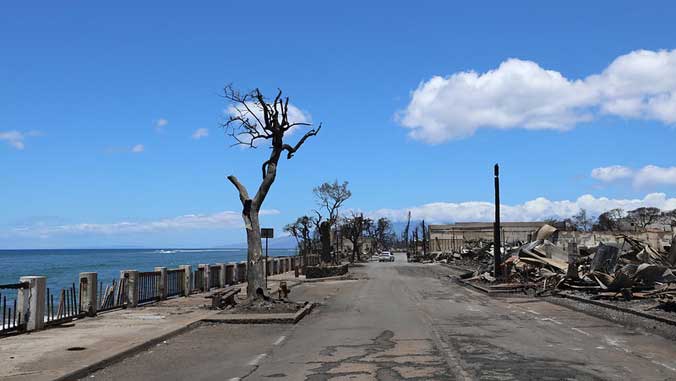
Jobless claims for the week ending September 2 have been released and a new University of Hawaiʻi Economic Research Organization (UHERO) blog by Senior Research Fellow Byron Gangnes shows that more than 11% of Maui County residents who were employed before the deadly wildfires have since filed for unemployment.
Unemployment claims data provide a timely indication of the employment costs inflicted by August’s tragic Maui wildfires, which killed at least 115 people and destroyed more than 2,300 structures. There have been 10,448 new claims for unemployment in Maui County in the four weeks since the fires struck, about 9,900 more than the preceding four weeks. This represents more than 11% of those who were employed before the wildfires in Maui County.
More on how to help Maui ʻohana and the Maui wildfires.
Residents of Maui have become unemployed for a number of reasons:
- Many restaurants and shops in Lahaina were completely destroyed by the fires, destroying jobs as well.
- West Maui north of Lahaina remains off limits, preventing hotels and other businesses from operating.
- Tourism-related businesses across all parts of Maui are suffering from a roughly 50% drop in visitors.
In addition, a large number of displaced families lost both houses and cars, making it extraordinarily difficult to commute to an existing job outside the burn area. While not qualifying them for unemployment, that still represents an additional employment loss.
Kihei, Wailea, Kahului, Hana and upcountry areas are all open for business. Please visit, pack your patience and help the people of Maui recover from this unfathomable disaster.
—Byron Gangnes
Each of these problems is likely to persist, and further layoffs may well occur as recessionary conditions weigh on many businesses. Because a full recovery from the wildfires will take years, the aftermath of the wildfires will impose a substantial employment cost to Maui communities well into the future.
Gangnes notes, “Kihei, Wailea, Kahului, Hana and upcountry areas are all open for business. Please visit, pack your patience and help the people of Maui recover from this unfathomable disaster.”
At the national level, new claims ticked down for the fourth straight week, but the four-week trailing average remains in line with claim levels prior to the pandemic. The claims data does not materially change the U.S. labor market picture: Slower monthly job growth, falling job openings and a growing labor force all point to a gradually softening labor market that will continue to take pressure off wages and inflation.
To see the entire blog, visit UHERO’s website.
UHERO is housed in UH Mānoa’s College of Social Sciences.

